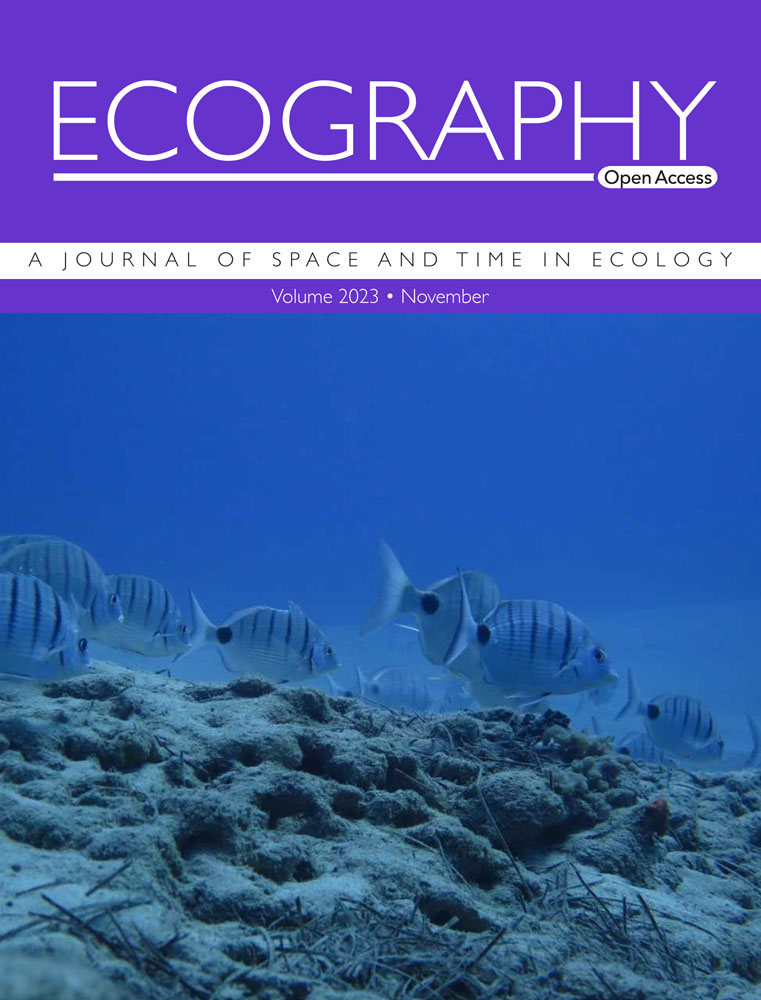Unraveling the role of environmental and anthropogenic drivers in shaping global patterns in mammal diversity
IF 5.4
1区 环境科学与生态学
Q1 BIODIVERSITY CONSERVATION
引用次数: 0
Abstract
Patterns in functional and phylogenetic diversity reflect ecological and evolutionary relationships among taxa, and thus can offer key insights into the mechanisms underlying species distributions. However, disentangling the relative influence of proximate environmental drivers versus biogeographic evolutionary history can be a challenge. Moreover, human activities have enormously impacted the global distribution of mammals over the past millennia, potentially skewing our understanding of the underlying processes influencing biodiversity accumulation and community structure. Here, we investigated how the environment shapes global patterns in terrestrial mammal diversity, and how anthropogenic impacts have altered our understanding of these mechanisms. To distinguish aspects of mammal diversity most directly influenced by proximate environmental conditions, we employed novel metrics representing the deviation between functional and phylogenetic diversity. We calculated these residual functional diversity values using both current mammal distributions and estimated distributions in the absence of human impacts to characterize the effect of anthropogenic diversity loss. Each dataset was then modeled separately as a function of key environmental drivers and compared. We found remarkable variation in residual functional diversity across terrestrial communities, suggesting the environment strongly mediates the relationship between functional and phylogenetic diversity. Specifically, temperature seasonality and evapotranspiration play key roles in shaping global patterns in mammal functional diversity. Critically, the strength of these relationships is dampened by anthropogenic biodiversity loss, which has homogenized functional and phylogenetic community structure across environmental gradients. By disentangling the role of human impacts on both patterns and purported mechanisms of mammal diversity, our results provide a more accurate depiction of the fundamental relationships underlying mammal communities.揭示环境和人为驱动因素在塑造哺乳动物多样性全球格局中的作用
功能和系统发育多样性模式反映了物种间的生态和进化关系,因此可以为物种分布机制提供关键见解。然而,将近因环境驱动因素与生物地理进化史的相对影响分开可能是一个挑战。此外,在过去的几千年里,人类活动极大地影响了哺乳动物的全球分布,潜在地扭曲了我们对影响生物多样性积累和群落结构的潜在过程的理解。在这里,我们研究了环境如何塑造陆生哺乳动物多样性的全球格局,以及人为影响如何改变了我们对这些机制的理解。为了区分哺乳动物多样性最直接受邻近环境条件影响的方面,我们采用了代表功能多样性和系统发育多样性之间偏差的新指标。我们使用当前哺乳动物分布和在没有人类影响的情况下的估计分布来计算这些剩余功能多样性值,以表征人为多样性丧失的影响。然后将每个数据集作为关键环境驱动因素的函数单独建模并进行比较。我们发现陆地群落的剩余功能多样性存在显著差异,表明环境在功能多样性和系统发育多样性之间起着重要的中介作用。具体来说,温度季节性和蒸散作用在塑造哺乳动物功能多样性的全球格局中起着关键作用。至关重要的是,这些关系的强度受到人为生物多样性丧失的抑制,这使得跨环境梯度的功能和系统发育群落结构均质化。通过解开人类对哺乳动物多样性模式和机制的影响,我们的研究结果为哺乳动物群落的基本关系提供了更准确的描述。
本文章由计算机程序翻译,如有差异,请以英文原文为准。
求助全文
约1分钟内获得全文
求助全文
来源期刊

Ecography
环境科学-生态学
CiteScore
11.60
自引率
3.40%
发文量
122
审稿时长
8-16 weeks
期刊介绍:
ECOGRAPHY publishes exciting, novel, and important articles that significantly advance understanding of ecological or biodiversity patterns in space or time. Papers focusing on conservation or restoration are welcomed, provided they are anchored in ecological theory and convey a general message that goes beyond a single case study. We encourage papers that seek advancing the field through the development and testing of theory or methodology, or by proposing new tools for analysis or interpretation of ecological phenomena. Manuscripts are expected to address general principles in ecology, though they may do so using a specific model system if they adequately frame the problem relative to a generalized ecological question or problem.
Purely descriptive papers are considered only if breaking new ground and/or describing patterns seldom explored. Studies focused on a single species or single location are generally discouraged unless they make a significant contribution to advancing general theory or understanding of biodiversity patterns and processes. Manuscripts merely confirming or marginally extending results of previous work are unlikely to be considered in Ecography.
Papers are judged by virtue of their originality, appeal to general interest, and their contribution to new developments in studies of spatial and temporal ecological patterns. There are no biases with regard to taxon, biome, or biogeographical area.
 求助内容:
求助内容: 应助结果提醒方式:
应助结果提醒方式:


